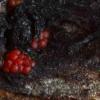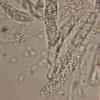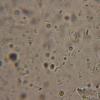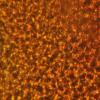
02-09-2025 11:34
Thomas Læssøehttps://svampe.databasen.org/observations/10527903

10-09-2025 23:53
 Marcel Heyligen
Marcel Heyligen
Found on Robinia pseudoacasia together with Diapor

10-09-2025 17:18
 Blasco Rafael
Blasco Rafael
Hola, encontre este estiercol de vaca estos apotec

03-09-2025 21:59
Philippe PELLICIERLa Léchère, Col de la Madeleine, alt 1970m, au s

07-09-2025 11:34
 Zuzana Sochorová (Egertová)
Zuzana Sochorová (Egertová)
Hello,I have identified this fungus as Hymenoscyph

05-09-2025 09:32
 Nicolas VAN VOOREN
Nicolas VAN VOOREN
Bonjour, hi everyone,Do you know where the fungari
Nectriaceae on Ulex europaeus
Peter Thompson,
16-02-2020 16:48
I have found some pale yellowish red (young) and shiny red (mature) fruit bodies from the Nectriaceae. They are growing gregariously on the effete stromata and empty pits of an ascomycete, possibly Stylodothis puccinioides, on a thin, burnt branch of Ulex europaeus.
The asci are completely filled with allantoid ascoconidia, typically 4 x 1 um, so this is possibly a species of Thyronectria.
I have attached a photo of groups of the perithecia, along with micro photos of asci, asco conidia and excipulum.
I wonder if anyone is aware of a species which would grow on this host combination?
Thank You,
With Best Wishes,
Peter.
Alain GARDIENNET,
18-02-2020 08:44
Re : Nectriaceae on Ulex europaeus
Hi Peter,
Perhaps you think right. You should wait for one month or two, and then look at it again. Perhaps that it could be an interesting fungus, somewhere clode to Thyronectria species.
Best wishes,
Alain





